ESCAPE
Cradock II: The Fish, the Show, the Ghosts & the Trekbokke
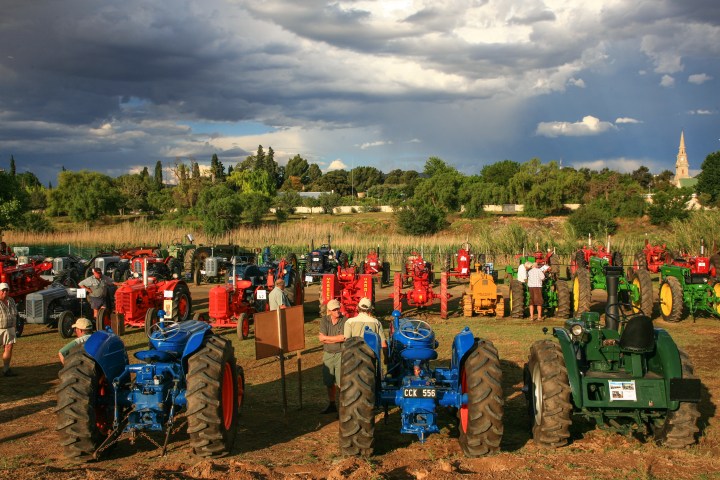
Cradock, where the Great Fish River surges past like a water python on a mission, is bigger than a village, smaller than your average upcountry town. And, like the old Cheers TV show, it’s a place where almost everyone knows your name.
The previously parched Cradock was given a new lease of life in 1976 when the Orange River Project began to pump irrigation water from the Gariep Dam to the Eastern Cape via the Great Fish River that flows through the town.
Paddler Dave Alexander and Water Affairs engineer KO Bang came up with the idea for a challenging local canoe race. Nearly 80 entrants took part in the first Fish River Canoe Marathon (known by everyone as The Fish) held in 1982. It has since developed into one of South Africa’s prime river races, with an even mix of fun and athleticism.
The springtime event begins at Grassridge Dam and follows a route that includes exotic names like the Knutsford Drop, the Baroda Weir, the Toast Rack, Keith’s Flyover and the Marlow Chute.
Read more in Daily Maverick: Cradock I: Karoo style churches, legends, festivals and spinning windpumps
Thousands of young river athletes descend on a bemused Cradock and paddle like gangbusters through chutes, over weirs, in reverse at times or upside down, for two days over more than 80km of this glorious watercourse that, flowing at no less than 26 cumecs for the event, feeds the farms and the people all the way down to the sea.
The normally sedate farming town resembles an Olympic athletes’ compound (complete with interested bystanders) and for the fit and the faithful, it would be an absolute sin to skip The Fish for any reason.
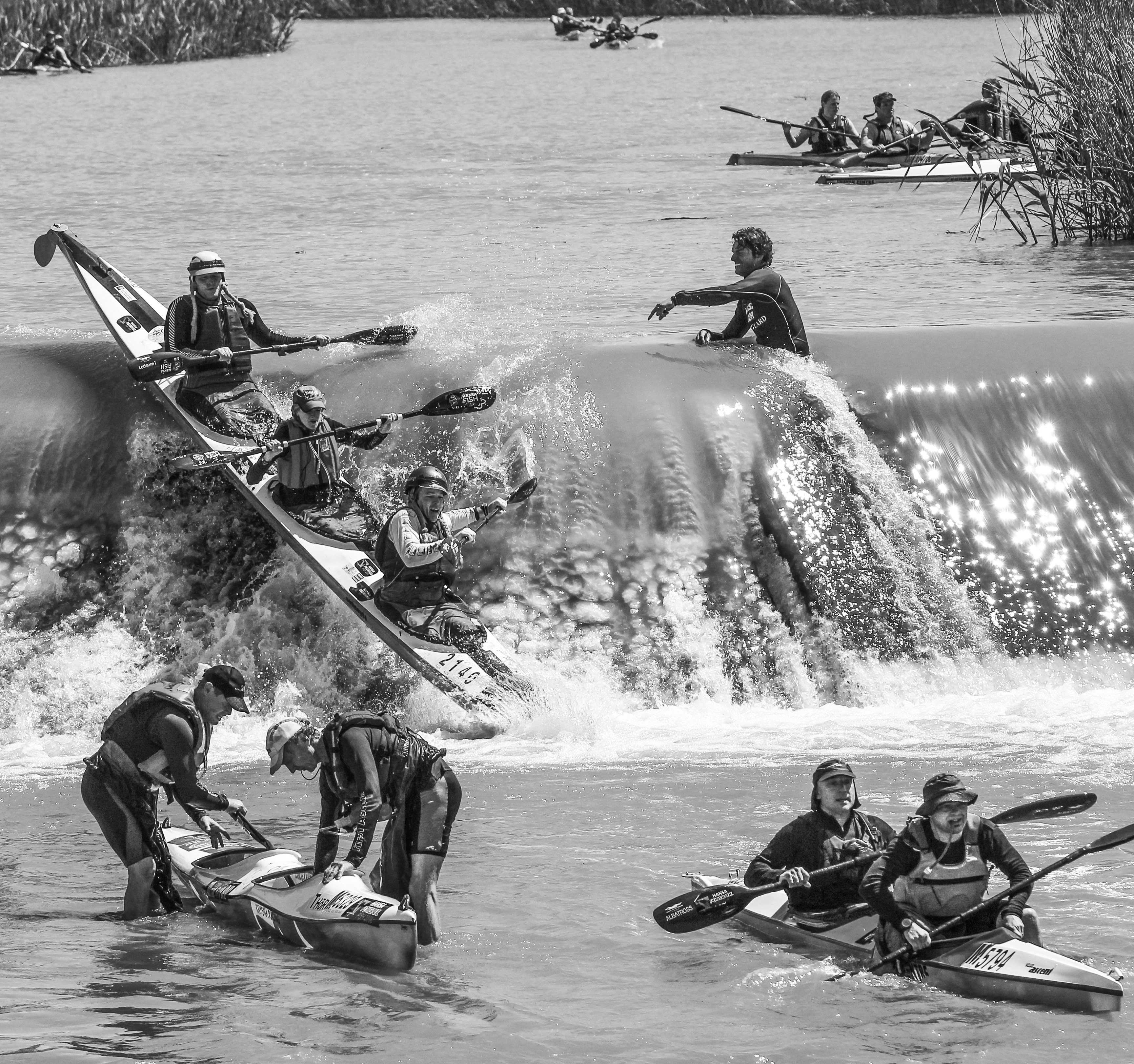
The Fish River Canoe Marathon – one of the October highlights in the Cradock calendar. Photograph by Chris Marais.
The Cradock show
Showtime in Cradock arrives on a weekend in October at the height of summer.
The riverside showgrounds are abuzz with wandering farmers, families chewing on sosaties, well-groomed livestock on their annual town jaunt and, in pride of place, a truly elegant selection of horses on display.
The Cradock Agricultural Show is one of the oldest of its kind in the country. Running since 1864, it never skipped a year through all the periods of conflict: the Anglo-Boer War (South African War), WW1 and WW2, with the Great Depression sandwiched between them.
The “leanest” Cradock Show on record goes back to 1948 when only 17 beasts (horses, cattle, sheep and goats) were in attendance. But the show went on regardless. However, the monster flood of 1974 broke the previously unbeaten Cradock Show years by simply washing away the grounds until almost nothing remained.
“It was uncanny. There was not a sound, just total destruction,” a bystander commented at the time. “There was nothing we could do about it.”
Five years later, all was rebuilt and the Cradock Show was on again, with the main attraction being the staging of the Monty Gadd Trophy. Cradock has always been a stud breeding area for the Boerperd and the Saddle Horse, and the best of these compete at the show.
The Marathon Man
Lucky Adams (pictured with his son Xavier) carries the people and the incidental history of Cradock in his head.
He can tell you who lived where, who married whom, how many children they had, and where they find themselves these days. Lucky remembers when the first 1,000th car was registered in the town, where the municipal dip tanks were, and where one sourced the best wire for the crafting of draadkarretjies en windpompe – wire cars and windpumps. Lucky runs a private delivery service on his bicycle, which he often leaves unattended on the street as he enters a building to hand over a letter.
“If someone steals it, I’ll just go to that person’s house and get it back.”
His clients receive a handwritten “Lucky Card” every Christmas, wittily summing up the craziness of the year just past.
Lucky Adams is also Cradock’s Marathon Man. By 2015 he had completed 19 gruelling Comrades Marathons, 17 Two Oceans Marathons and more than 30 local marathons.
As a youngster, he built his strength and stamina running up and down the seilklippe, the smooth, rounded stones of the local hills that children have used as slides for more than two centuries.
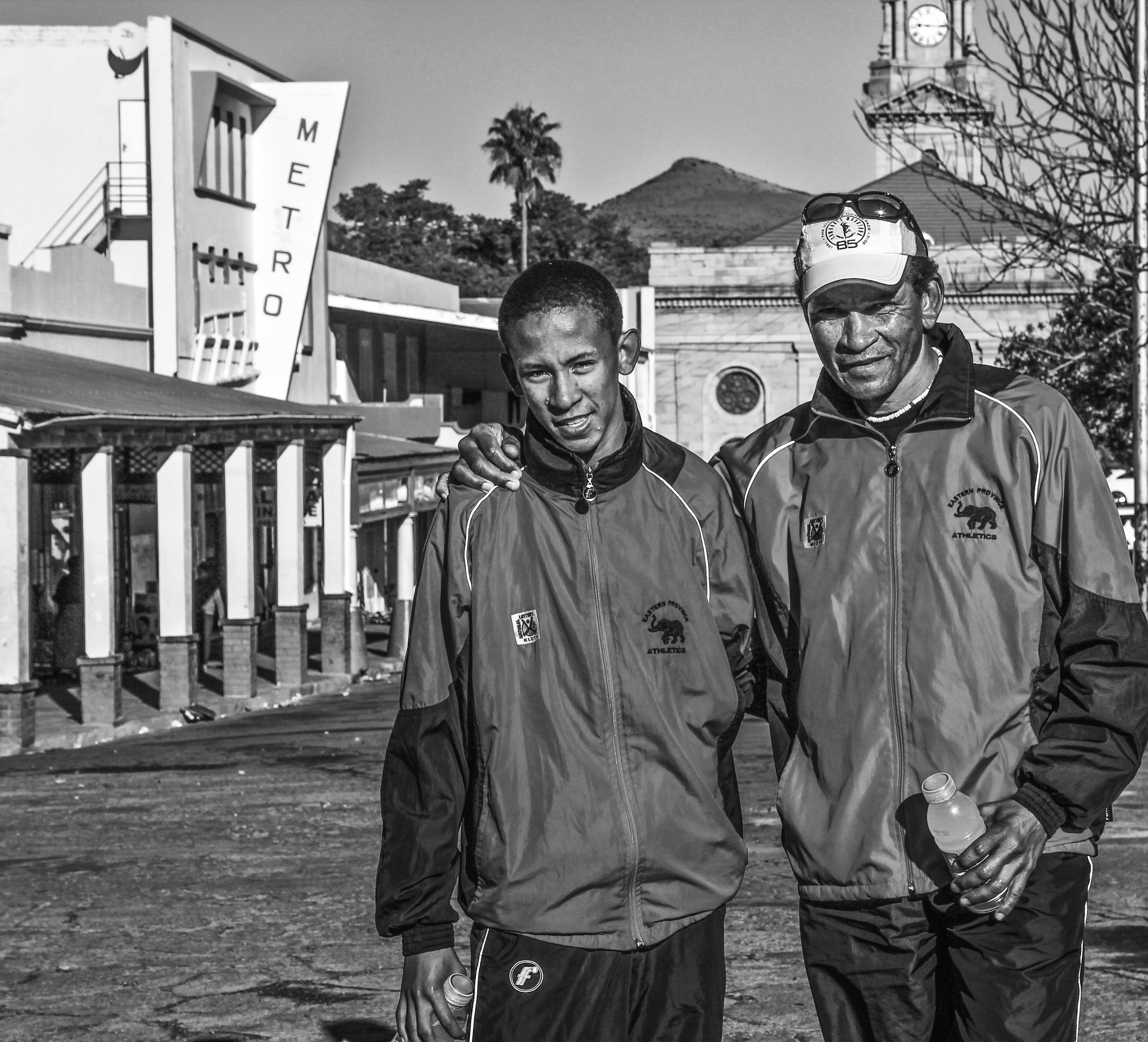
Marathon Man Lucky Adams and his son Xavier, who still runs with his dad. Photograph by Chris Marais.
The priceless horn
One of the most treasured items in the Cradock Club is a sheep’s horn. Fair enough, you might say. This is sheep-farming country. What’s weird about that?
Well, the thing is that this horn comes from a Scottish Highland sheep. It is generously studded with silver and amethyst crystals and once contained a large dollop of really sneezy stuff. This snuff horn was donated to the club by the departing Sherwood Foresters Regiment after the Anglo-Boer War in 1901.
They also left behind a fabulous Burmese teak leather-topped table, which now has pride of place in the reading room of the 134-year-old gentlemen’s club.
In March 1974, the Great Fish River burst its banks and the Cradock Club in Bree Street was flooded. Its identical twin down the road, known today as The Albert House B&B, was also affected. Both survived the rising waters, however.
The first order of business at the club was to rescue the beloved 12-seater table. Displaying their typical Midlands farming ingenuity, the members rushed in with 44-gallon drums and used them to float the table and other bits of furniture above the floodwaters.
One of the more eccentric Cradock Club rules is that everyone entering the bar must shake hands with everyone else at the bar. And you may not talk politics, religion or business without buying all the blokes a round of drinks first.
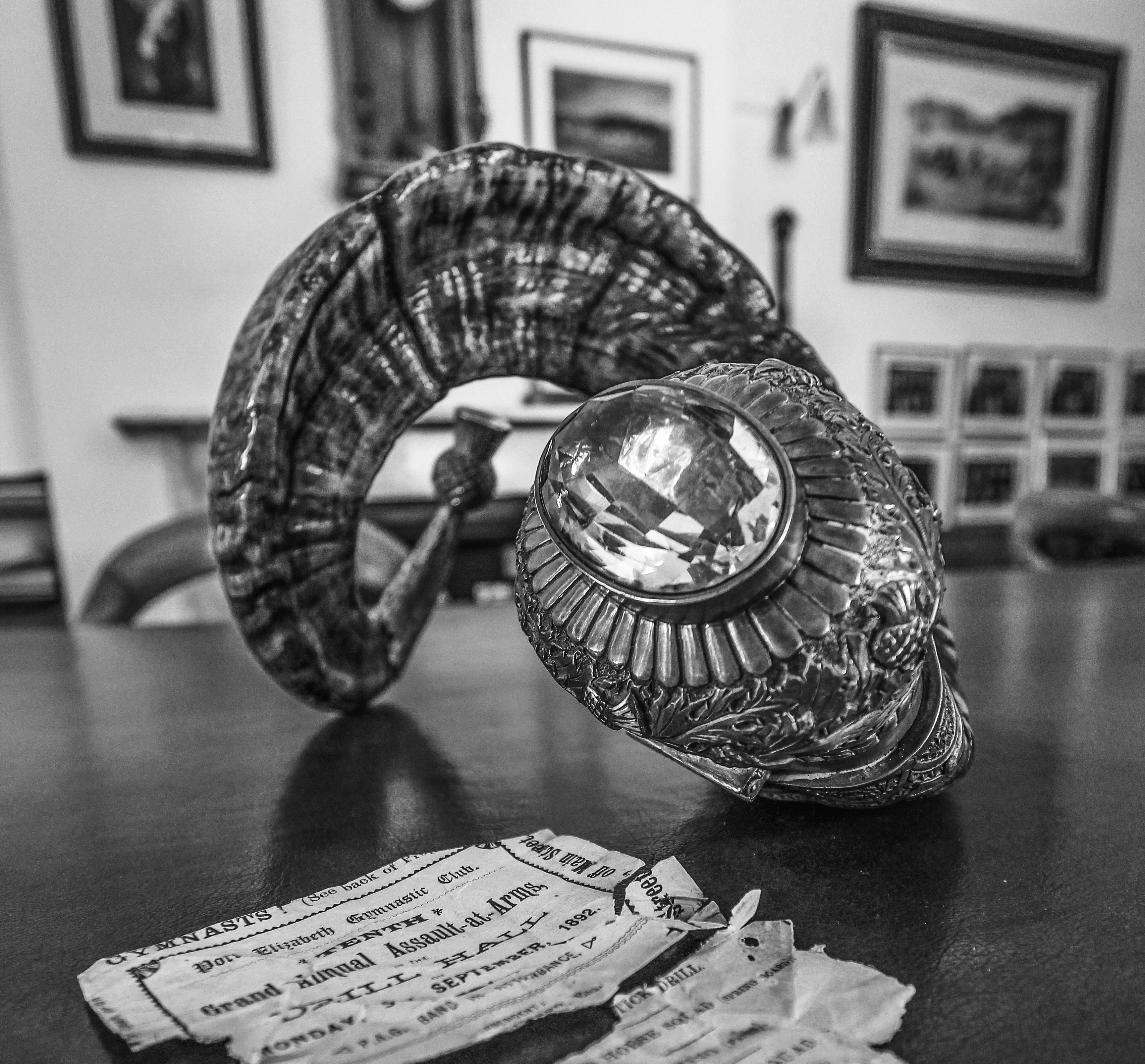
A snuff horn that once belonged to a Scottish Highland sheep – now a prized possession of the Cradock Club. Photograph by Chris Marais.
Cron’s trekbokke
Cron Schreiner, Cradock-based husband to Olive back in Victorian times, loved hunting. But he was also fascinated by the concept of the trekbokke, those almost-mythical herds of springbok that used to cross the Karoo in vast sweeps, devouring everything in their path.
Most of the other men who ventured across the Karoo settled for simply shooting as many springbok as they could, harvesting their meat for biltong and their skins for all sorts of useful purposes. They didn’t even question the antelope multitudes before them, believing that their numbers were infinite. They weren’t, and within a few decades their massive numbers had dwindled and the biltong hunters moved on.
Cron Schreiner once witnessed a trekbok migration, and describes it thus:
“Our glance at one sweep took in the expanse of brown country, bounded in the distance by low kopjes, bathed in the wonderful glowing tints of the Karoo, and throughout its whole extent the antelopes grazed peacefully in the warm afternoon winter sunshine.
“We eventually computed the number to be not less than 500,000 – half a million springboks in sight at one moment.”
A sight to remember – and then gone forever.

A mere sampling of the springbok that once crossed the Karoo plains in their millions. Photograph by Chris Marais.
Serving aces at Fish River
Tennis was once the sport of the Karoo. There were clubs all over the region. In the modern era, however, many of them have closed. But not the Fish River Tennis Club. Generations of old families are still here, bonding over ancient customs.
This is what clans like the Colletts do every Saturday afternoon. They gather from 3pm onwards at the Tennis Club. Every family takes a turn to host. The man organises the tennis roster. The woman makes the snacks and tea. Even though the sporting dress is informal, Fish River is where amateurs and budding professionals have won and lost hard-fought matches.
It is striking how many young families there are here, as evidenced by the swarms of children.
“Perhaps there’s something in the water,” says a Fish River mom, keeping a fond eye on her toddler son.
This precious country outpost constitutes a ready-made support group. There is the constant ebb and flow of babies, dummies, spoegdoekies (bibs) and nappies.
The families have shared experiences of past floods, droughts, crop disasters, fires, storms, and where the best riverside picnic spots are. The seniors also remember the stories of yesteryear, like the time during the Anglo-Boer War when their fathers hid their rifles standing upright in the quince hedges – which are still growing today.
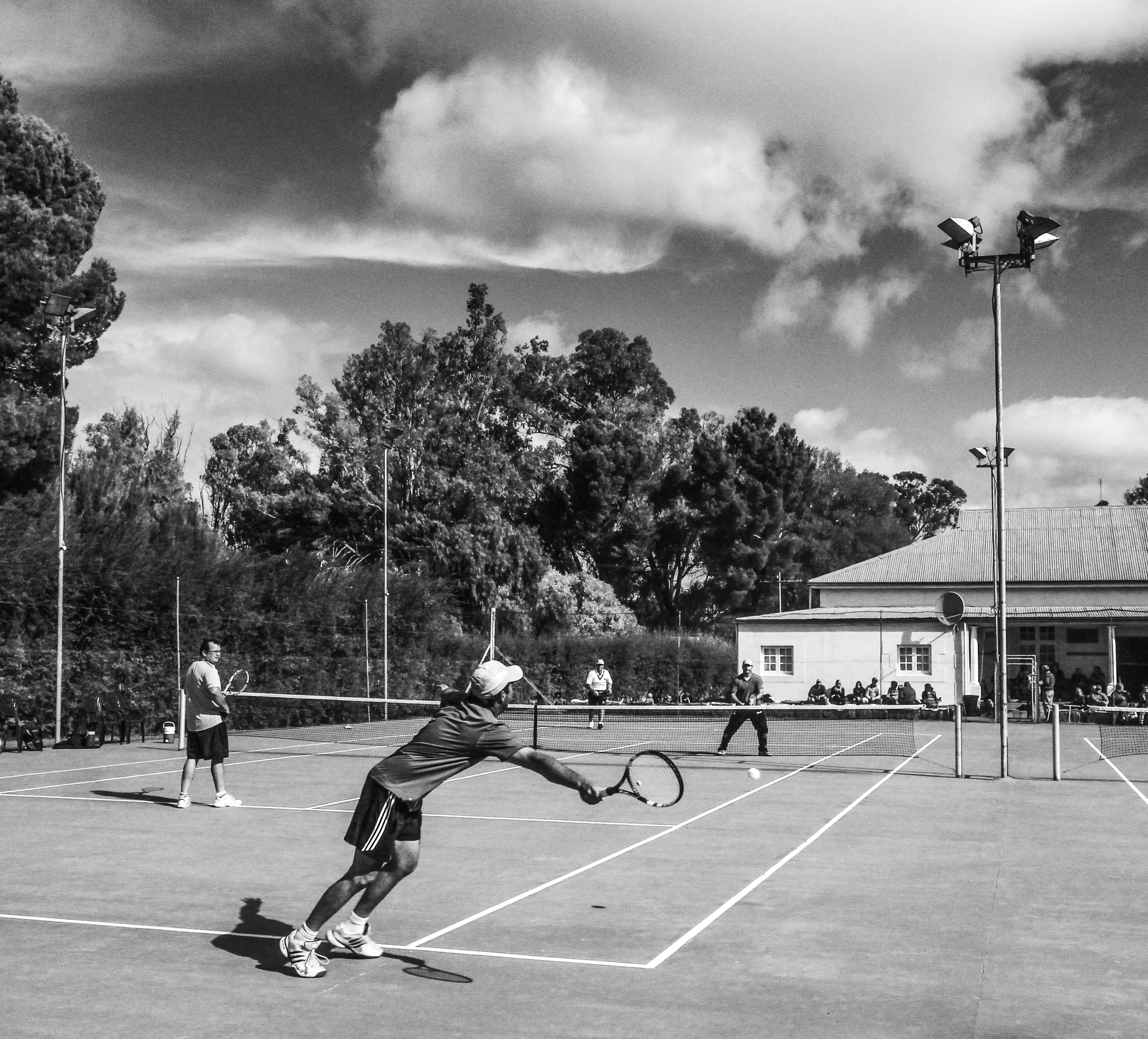
The Fish River Tennis Club, one of the longest-surviving social sports venues in the Karoo. Photograph by Chris Marais.
Hitched in the heartland
It’s a Saturday afternoon in Cradock, and the church bells are pealing merrily.
On the steps outside the Moederkerk, a bride and groom greet the bright sunshine and well-wishers fling confetti and rose petals. A vintage car gleams in the road, ready to whisk the couple away to the reception, set in a custom-designed wedding venue outside town.
A Cradock-based wedding photographer is at hand, guiding everyone through the ritual. He’s a professional man behind the camera, but he’s also popular because of his warm, personable Karoo manner. His wife does the makeup, her sister bakes the wedding cake and a hairdresser friend looks after the bride and her posse – it’s a thriving family business.
After the reception, the newlyweds hive off to one of the many farmstays in the district for their honeymoon, while the guests spend the night in a grand Victorian hotel.
A week later they return home, having had the time of their lives – without the Indian Ocean island resort bill. In fact, the whole affair probably cost less than half of a city wedding package.
A Karoo wedding is authentic, affordable and very special. Being in the centre of South Africa, it’s an easy road trip for guests based anywhere in the country.
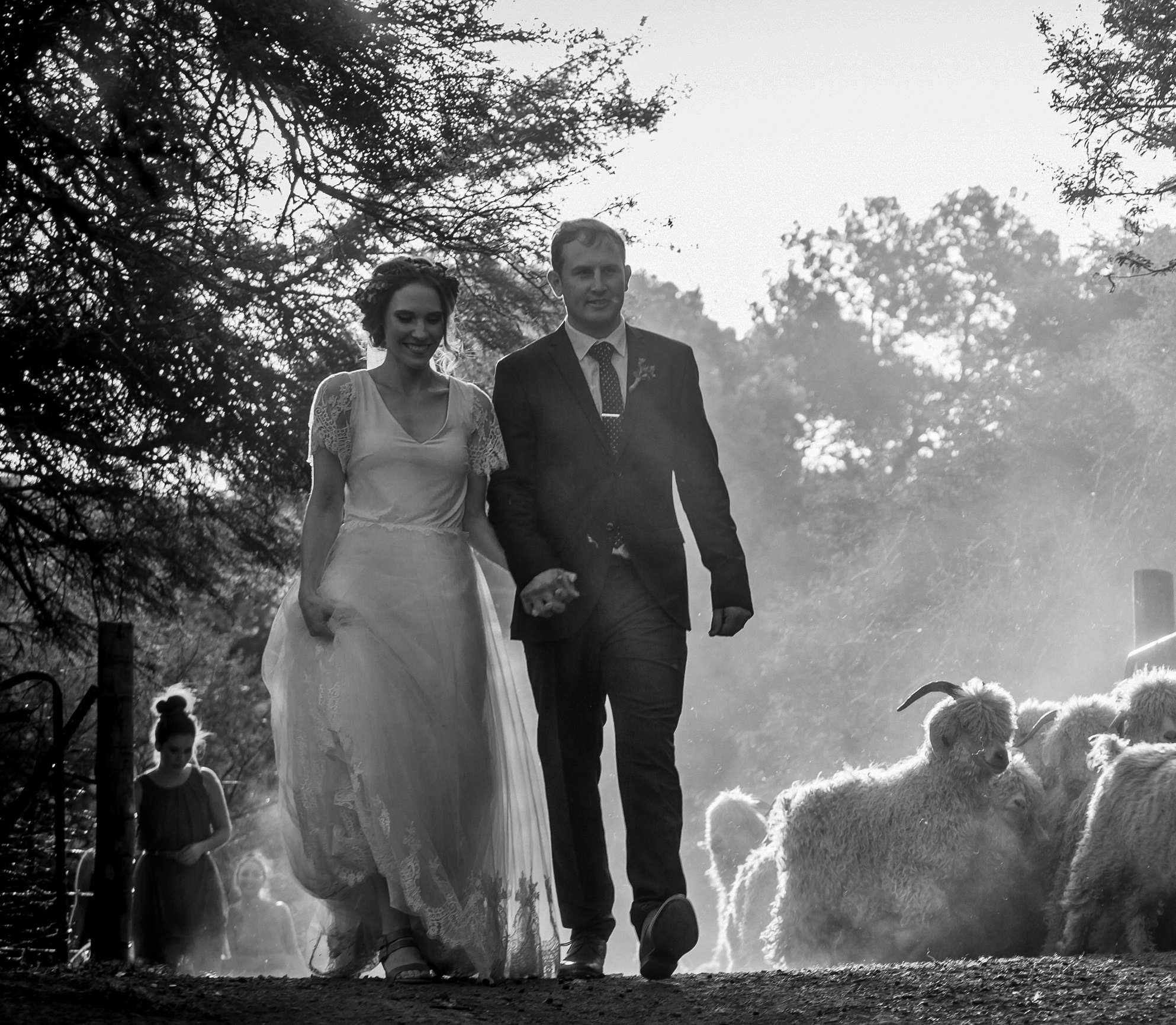
Getting married on a Karoo Heartland farm – a cheaper, more authentic alternative to an expensive city wedding. Photograph by Chris Marais.
The curious mountain zebra
One of the first things you should do when visiting the Mountain Zebra National Park just outside Cradock is climb out of your vehicle at one of the viewpoints and sniff the clean air. It smells of the herbed fragrance of Karoo bossies with the occasional mid-note of sweet thorn.
Set among the bulky ironstone massifs of the Bankberg mountains, this park combines the serenity of a semi-desert with horizon-wide views of stacked mountain ranges that fade to mauve.
You’re in big sky country, and the feeling of being able to see forever is a major part of the Mountain Zebra National Park’s appeal.
The main manne here, of course, are the Cape mountain zebras for which the national park was named. They make eye contact with you and often pose heroically on a mountain ridge for that perfect late-afternoon photograph. Take a careful look and you will immediately see that this black and white equid is quite different from the more common plains zebra.
For a start, the mountain zebra is smaller, and more pony-sized than a horse. Its stripes go all the way down to its hoofs and it has a white belly, donkey-sized ears and a remarkable fat-storage wattle on its neck, a bit like an eland’s. Its nose is the perfect shade of chocolate-orange and it has an easy Latin name: Equus zebra zebra. DM
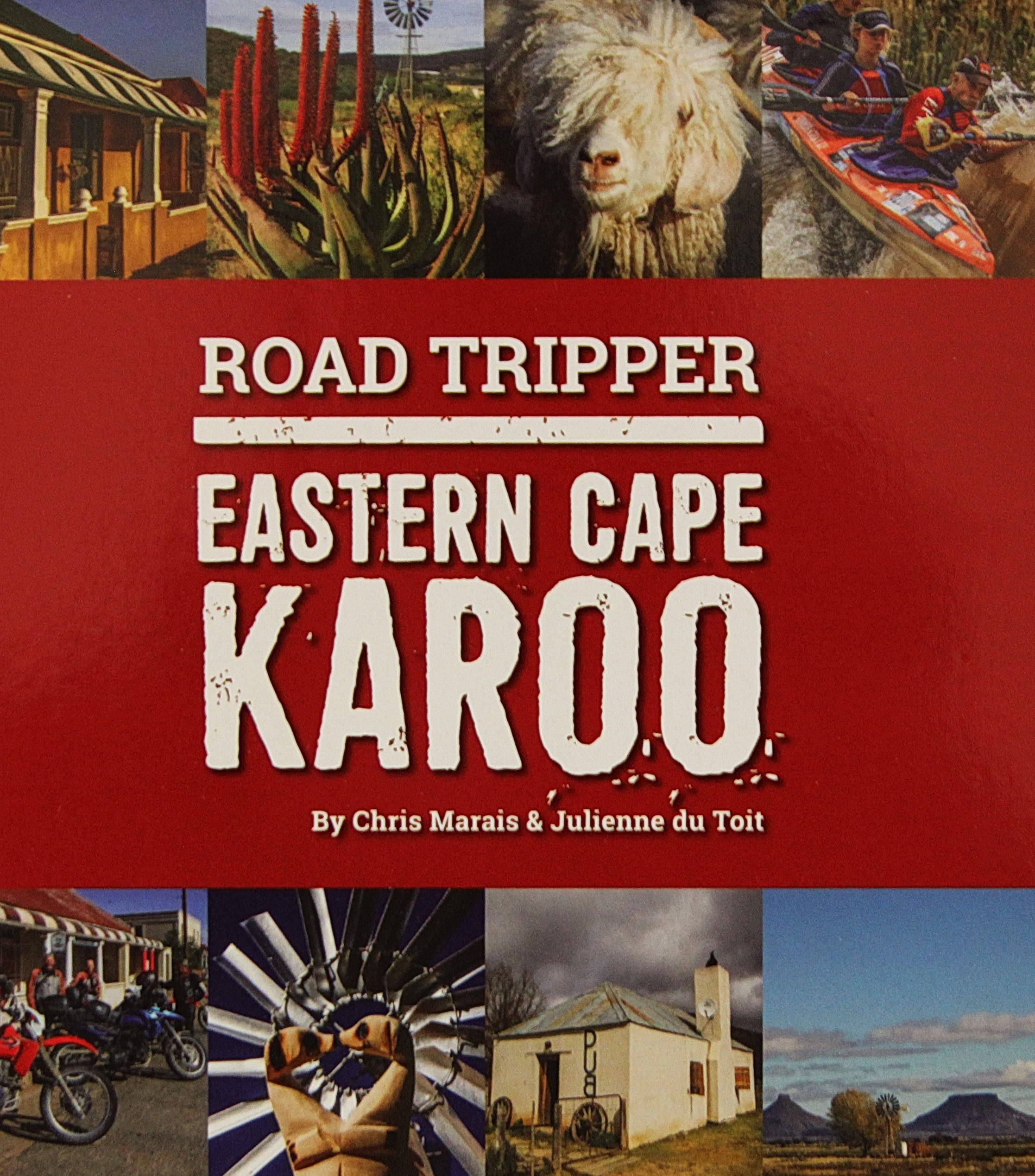
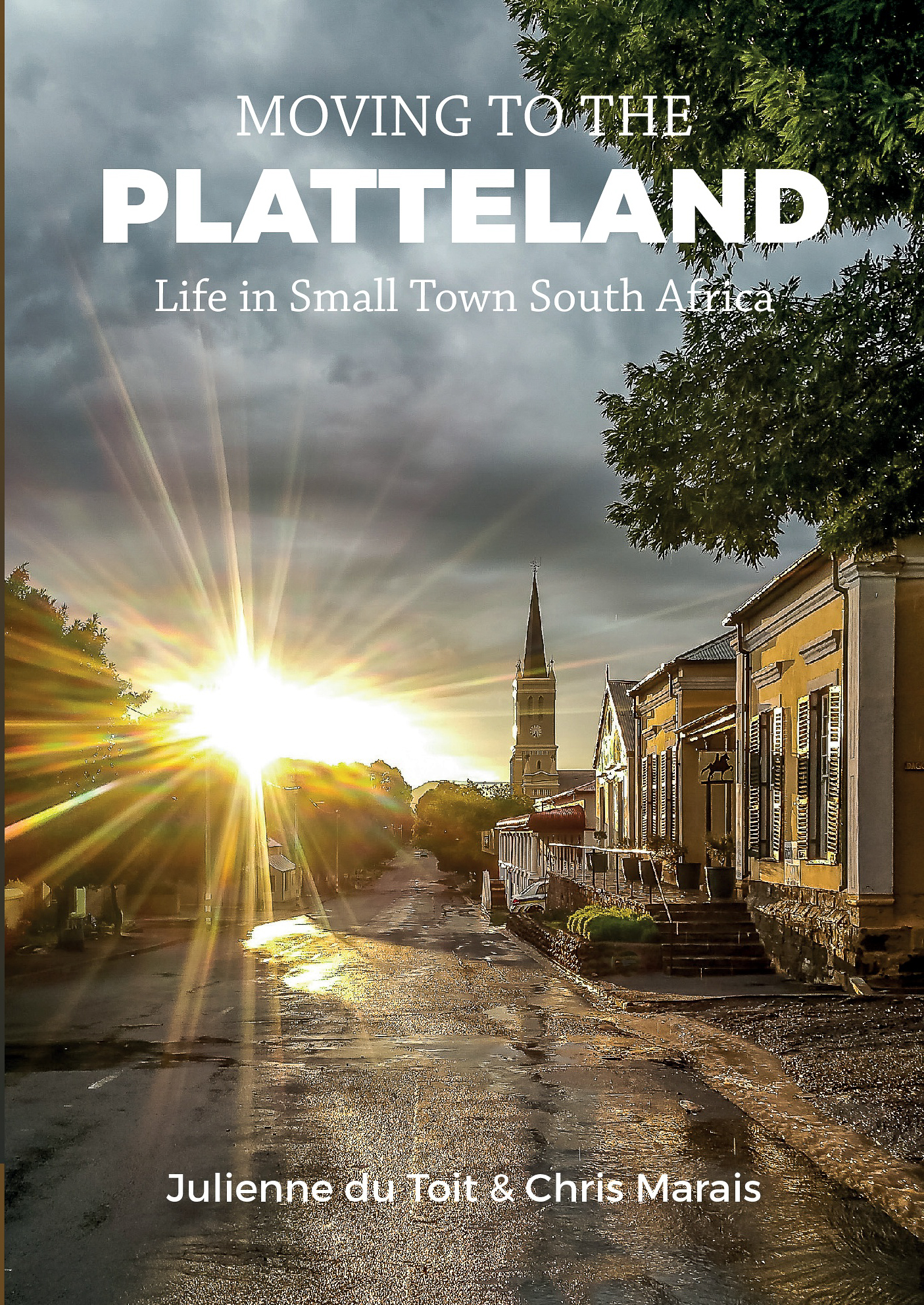
This is an excerpt from Road Tripper: Eastern Cape Karoo by Chris Marais and Julienne du Toit. The authors are offering a two-book special of Moving to the Platteland: Life in Small Town South Africa and Road Tripper: Eastern Cape Karoo at only R520, including courier costs in South Africa. For enquiries, contact [email protected].

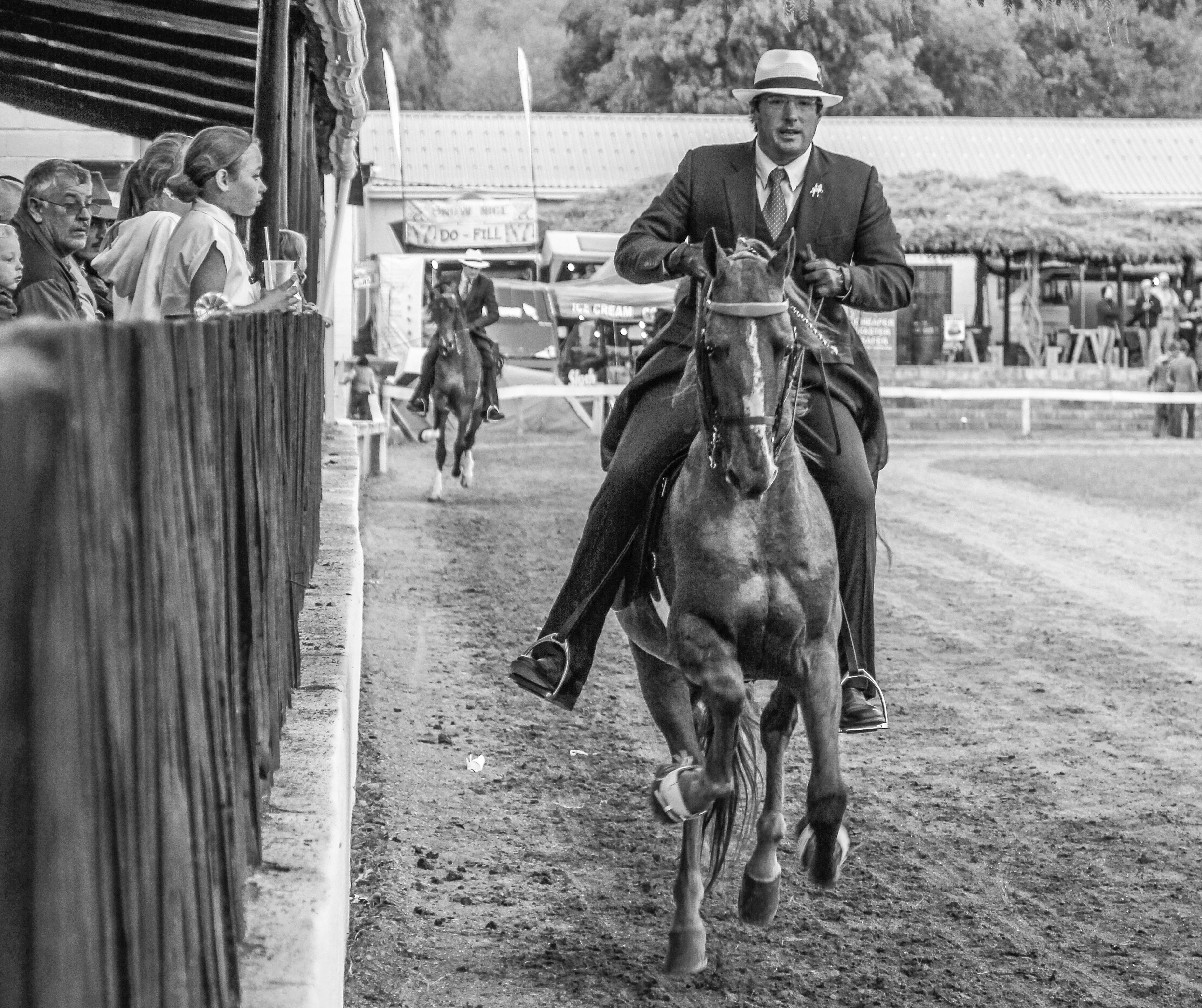
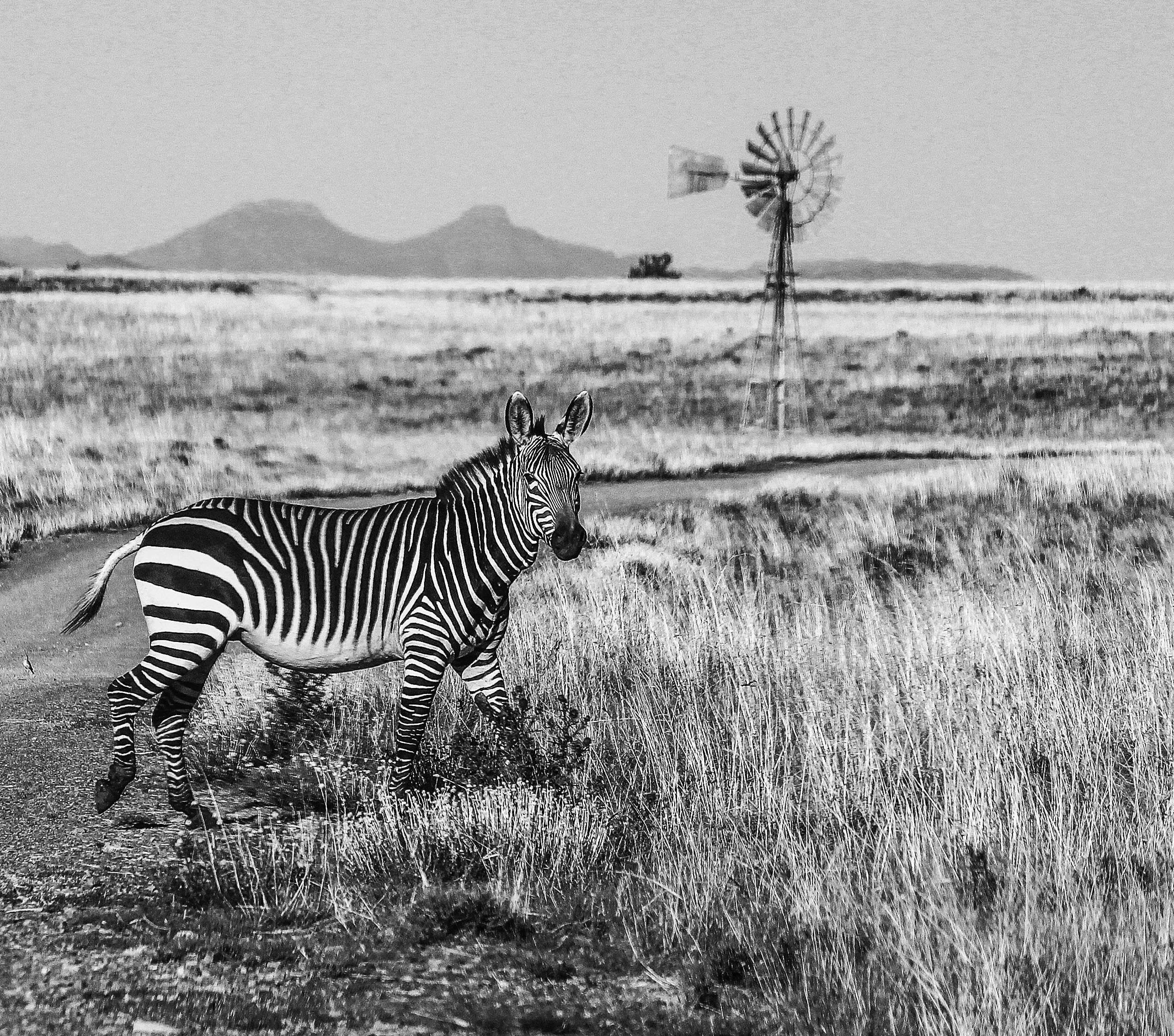






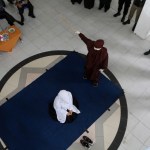










 Become an Insider
Become an Insider
Ahhh man – what a lovely lovely piece of writing. Thank you.
Lovely article-thank you. Did the Fish five times. If our country was more stable with a proper government, people from other countries would be queuing up to visit places such as Cradock and especially to do the daunting Canoe Marathon. Btw, I think it was John Ledger who said that the vast Springbok herds could at list be partially re-built by dropping fences among other actions
I enjoyed that, thanks!
It’s such a shame that this evocative story of a town does not also include in its ‘historical’ perspective the vital role of some of its inhabitants in our country’s liberation (even though they were mostly racially segregated into Lingelihle, on the outskirts). It would be worth buying everyone a round of drinks at the pub if this is considered ‘politics’. The “Cradock Four”, Calata, Mkonto, Mhlauli and Goniwe, assassinated by the apartheid government, are all from there. In more recent years, the late and wonderful Nyameka Goniwe, (widow of Matthew) served as Mayor of Cradock and continued to make invaluable contributions to the town.